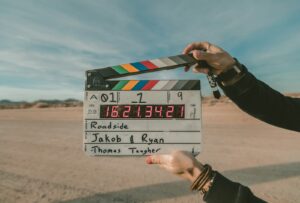In the digital age, where streaming services and modern cinema dominate, there’s a growing charm around vintage film appreciation. I’ve always been fascinated by the allure of classic cinema—the crackle of the film reel, the artistry of the golden age directors, and the iconic performances that have stood the test of time. It’s not just about nostalgia; it’s about recognizing and preserving the roots of cinematic art that continue to influence today’s filmmakers.
The journey of preserving these timeless pieces is fraught with challenges, from selecting which films to save to maintaining them in the ideal conditions. Yet, the effort is worthwhile as each film offers a window into the past, reflecting the cultural, social, and political nuances of its time. Engaging with vintage films isn’t merely entertainment; it’s an act of cultural preservation, connecting us with the generations before and enriching our understanding of the evolution of film as a powerful medium of storytelling.
The Charm of Vintage Films
In the realm of cinema, vintage films hold a special place, captivating audiences with their enduring appeal and artistic legacy. These classic movies offer a unique glimpse into the past while displaying timeless narratives and innovative filmmaking techniques that continue to influence modern cinema.
Why Vintage Films Are Timeless
Vintage films transcend time through their storytelling, character development, and the way they resonate with audiences across different eras. Classics like “Casablanca” and “Gone with the Wind” have maintained their allure due to their profound narratives and memorable characters. The emotional depth and universal themes—love, conflict, and redemption—connect deeply with viewers, regardless of the film’s age.
Moreover, the lack of modern technology in these films often meant that directors had to rely more on strong storytelling and character development. This often led to innovative uses of camera techniques, lighting, and narrative structures, which have set standards in filmmaking that persist today. Vintage film appreciation is not just for the nostalgia or the historical aspect; it’s about recognizing the artistic craftsmanship that laid the foundation for future cinematic endeavors.
The Evolution of Film Techniques
The evolution of film techniques is markedly observed as one traces the lineage from vintage films to contemporary productions. Initially, filmmakers were restricted by technology, yet they managed to create compelling narratives within these confines. As technology advanced, so did the complexity of film techniques. Early films were often silent and black-and-white, relying heavily on exaggerated expressions and mime to convey the story. As sound and color were introduced, new dimensions in storytelling emerged, allowing for more intricate plots and character development.
Camera movement, which started with simple pans and fixed frames, evolved into complex tracking shots and dolly movements that added dynamism and a greater sense of immersion in films. Editing techniques also grew more sophisticated; the jump cut, cross-cut, and montage, pioneered in films like Eisenstein’s “Battleship Potemkin,” revolutionized how scenes were stitched together to build suspense or convey parallel narratives.
The understanding and appreciation of these techniques enhance our viewings of vintage films. Recognizing how these methods were developed and perfected helps audiences appreciate the ingenuity of filmmakers who worked in eras of more limited technical resources. The craft and creativity displayed in these classics not only celebrate film history but also enrich our cinema culture, proving that vintage films are essential in the broader tapestry of film appreciation.
Iconic Genres and Styles
Delving deeper into vintage film appreciation, I explore the iconic genres and styles that have left an indelible mark on cinema’s history. These genres not only define the era in which they thrived but also continue to influence modern filmmaking.
Exploring Film Noir
Film Noir, a term first used in 1946, epitomizes a genre that flourished in the 1940s and 1950s. Known for its dark, pessimistic themes and stark black-and-white cinematography, this style of filmmaking captures the post-war disillusionment characterized by cynicism, moral ambiguity, and a foreboding sense of doom. Iconic films such as “Double Indemnity” (1944) and “The Maltese Falcon” (1941) showcase intricate plots where crime and hard-boiled characters take center stage. The visual style of Film Noir is unmistakable: low-key lighting, stark contrasts, and compositions filled with shadows craft a moody and suspenseful atmosphere that pulls audiences into a thrilling narrative. The dramatic approach and the psychological complexity of characters in Film Noir offer a profound cinematic experience that makes this genre a critical study in film appreciation.
The Rise of the Hollywood Musical
Transitioning from the grim shadows of Film Noir, the Hollywood Musical represents a spectrum’s flip side with its vibrant colors, dynamic performances, and uplifting narratives. This genre gained immense popularity during the era of the Great Depression as audiences sought escapes from the harsh realities of everyday life. Classics like “Singin’ in the Rain” (1952) and “The Wizard of Oz” (1939) not only showcased technological advancements, such as the use of Technicolor, but they also set high standards for choreography and musical integration in storytelling. The Hollywood Musical created an enchanting world where problems could be solved through song and dance, resonating hope and joy. The energy and optimism of musicals offered audiences a form of cinematic catharsis and have been a significant cultural force in shaping the landscape of American entertainment.
By appreciating these genres, I admire the craft and creativity that define historical filmmaking and cherish the rich legacy that continues to inspire the cinema today.
Influential Filmmakers From the Golden Age
The Golden Age of cinema, a period renowned for its significant impact on film history, introduced some of the most visionary filmmakers who shaped the very fabric of the industry. In my exploration of vintage film appreciation, it’s essential to highlight these individuals whose pioneering work continues to influence filmmakers and captivate audiences worldwide.
Directors Who Shaped Cinema
The directors of the Golden Age were instrumental in defining the cinematic techniques that remain fundamental to filmmaking. Alfred Hitchcock, often referred to as “The Master of Suspense,” revolutionized the use of camera movement and editing to enhance the suspense and psychological depth in films like Rear Window and Psycho. His innovative techniques, such as the famous dolly zoom in Vertigo, have become staples in cinematic storytelling.
Another luminary, Orson Welles, brought a radical approach to narrative structure and visual composition. His debut film, Citizen Kane, is widely considered a masterpiece of film history due to its innovative use of deep focus and non-linear storytelling. Welles’s ability to merge complex narratives with groundbreaking cinematography has set a high benchmark in film production.
John Ford, known for his iconic Westerns, captured the essence of American history and spirit. His films like The Searchers and Stagecoach not only defined a genre but also showcased his skill in using expansive landscapes to tell compelling, character-driven stories. Ford’s work is a prime example of how setting and cinematography can be as influential as the story itself.
Notable Screenwriters and Their Craft
The Golden Age also witnessed exceptional talents in screenwriting whose works have transcessed time. Billy Wilder, one of the era’s most versatile writers, excelled across various genres, crafting screenplays that blended wit, drama, and a sharp critique of societal norms. His films Sunset Boulevard and Some Like It Hot are exemplary for their clever dialogue and enduring charm.
Ben Hecht, another prolific writer, contributed significantly to the film noir genre with his tight, gritty scripts for movies like Scarface (1932) and Notorious (1946). Hecht’s ability to create taut, snappy dialogues and complex characters has earned him the reputation of being one of the greatest screenwriters in American cinema.
Frances Marion, a pioneer among female screenwriters, brought depth and nuance to her scripts by focusing on strong, multifaceted female characters. Her work in films like The Wind (1928) and Camille (1936) not only entertained but also provided commentary on the social issues of her time. Marion’s contributions showcase the vital role screenwriters play in crafting the film’s narrative and emotional core.
Understanding Film Elements
In diving deeper into vintage film appreciation, it’s crucial to comprehend the various components that collectively create the magic seen on screen. With a focus on classic cinema, I’ll explore the intricate roles of cinematography and music in shaping timeless masterpieces.
The Art of Cinematography in Classic Cinema
Cinematography in classic films isn’t just about capturing scenes; it’s an art that uses light, shadow, and camera movement to convey the story’s emotional and narrative depths. Movies like “Citizen Kane,” directed by Orson Welles, showcase pioneering techniques such as deep focus and low-angle shots. These methods not only enhanced the dramatic effect but also invigorated the storytelling, making the cinematography an active storyteller within the film.
Iconic cinematographers, like Gregg Toland who worked on “Citizen Kane,” employed innovative techniques that influenced countless films thereafter. The careful orchestration of light and shadow in Film Noir, for instance, created a visual style that isnot only distinctive but also evocative of the genre’s moody and suspenseful atmosphere. This meticulous attention to framing and camera angles helps audiences connect more deeply with the film, offering a visual journey that complements the plot and character development.
Soundtracks That Defined Generations
The importance of music in classic cinema extends beyond mere background sound; it serves as a critical narrative device that enhances the emotional resonance and helps solidify films in the memories of audiences. For example, the haunting score of “Psycho” by Bernard Herrmann intensifies the suspense and horror, becoming as iconic as the film itself.
Music in movies like “Gone with the Wind” or “Casablanca” also plays a pivotal role in setting the tone and supporting the storytelling. Max Steiner’s compositions in “Gone with the Wind” evoke the grandeur and tragedy of the epic story, while the song “As Time Goes By” in “Casablanca” becomes a recurring motif that is central to the film’s romantic and nostalgic theme.
These soundtracks have transcended time, often becoming stand-alone pieces of musical art admired across different generations. They not only enhance the viewing experience but also deepen the audience’s emotional engagement with the film, proving that music is integral to the art of cinema.
Vintage Film Appreciation
As a passionate advocate for vintage film appreciation, I find that immersing oneself in classic cinema can be a deeply rewarding experience. Here, I’ll delve into effective strategies for appreciating and analyzing these timeless treasures.
Tips for Viewing and Understanding Context
Classic films offer a window into the era they were produced and can provide profound insights into the social and cultural dynamics of that time. When viewing such films, it’s crucial to consider the historical context that influenced the production. Recognizing the time period during which a movie was made helps in understanding the themes and stylistic choices prevalent in that era. For instance, “Gone with the Wind” reflects the American South during the Civil War and Reconstruction era, which affects both its story and its portrayal of characters.
Further, exploring the film’s reception in different countries and across various cultures can illuminate how universal themes are portrayed differently. Classic cinema often grapples with themes like hope, despair, and human nature; viewing these through the lens of the time’s social norms and historical events enriches the experience significantly. Additionally, familiarizing oneself with the director’s body of work—such as Alfred Hitchcock’s suspense techniques or Charlie Chaplin’s blend of comedy and drama—adds depth to the viewing process.
Learning to Recognize Cinematic Techniques
The ability to recognize and appreciate cinematic techniques is pivotal in film appreciation. Classic films are a great resource for observing foundational cinematography and editing styles that have shaped modern filmmaking. Pay attention to camera movements, shot compositions, lighting, and the use of music to convey emotion or enhance a scene.
For example, Orson Welles’ use of deep focus in “Citizen Kane” allows multiple planes in the scene to be in sharp focus simultaneously, which was revolutionary at the time. This technique adds a dynamic layer to storytelling, allowing audiences to choose where to focus their attention within the frame. Observing how lighting is used to highlight characters or set the mood can also provide insights into the film director’s vision and the story’s underlying themes.
Moreover, understanding the editing rhythm that a film uses to advance its plot and develop its characters is crucial. Early films like Edwin S. Porter’s “The Great Train Robbery” demonstrate editing techniques that are foundational to narrative development in cinema. By appreciating these elements, viewers can not only enjoy classic films but also gain a better understanding of how these methods have evolved into the complex cinematic techniques used today.
By applying these strategies, viewers can deepen their knowledge of film history and enhance their ability to appreciate the rich tapestry of classic cinema.
Embracing vintage films offers a unique lens through which to view the past not just as history but as living art that continues to resonate with audiences today. As I’ve delved into the classics from “Casablanca” to “Gone with the Wind,” I’ve realized that these films are more than just entertainment; they’re a crucial part of our cultural tapestry. By understanding the historical context and recognizing the pioneering cinematic techniques used in these films we not only enrich our viewing experience but also gain a deeper appreciation for how far the film industry has come. Whether you’re a seasoned cinephile or a newcomer to classic cinema I encourage you to explore these timeless masterpieces. They hold the power to educate inspire and move us in ways that modern films can only aspire to.
Frequently Asked Questions
How can one become skilled in film appreciation?
To become skilled in film appreciation, immerse yourself in a variety of films and critically analyze them using elements like themes, cinematography, and editing. Focus on how these aspects work together to convey the film’s message or emotion.
What are effective strategies for writing a movie review?
Effective strategies include watching the movie at least once, taking detailed notes, critically evaluating both the form and content, and writing a balanced review that covers both strengths and weaknesses. Additionally, revising and proofreading your work is crucial to ensure clarity and cohesion.
What types of history classes are considered easy in college?
Survey courses, which overview a specific period or region, and classes focused on a narrow theme or time frame, are generally considered easier due to their broad, less detailed approach to historical content.
How can you succinctly praise a movie?
Praising a movie succinctly can be done with impactful adjectives like “captivating,” “stellar,” “exceptional,” or “innovative.”
What does ‘plot’ mean in film appreciation?
In film, the plot refers to the sequence of events that make up the storyline, where each event drives the next through cause and effect. This narrative structure is crucial for developing a compelling and engaging film.



